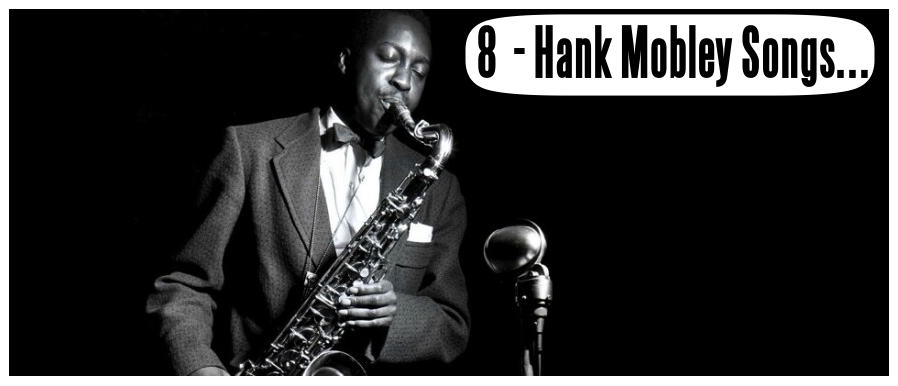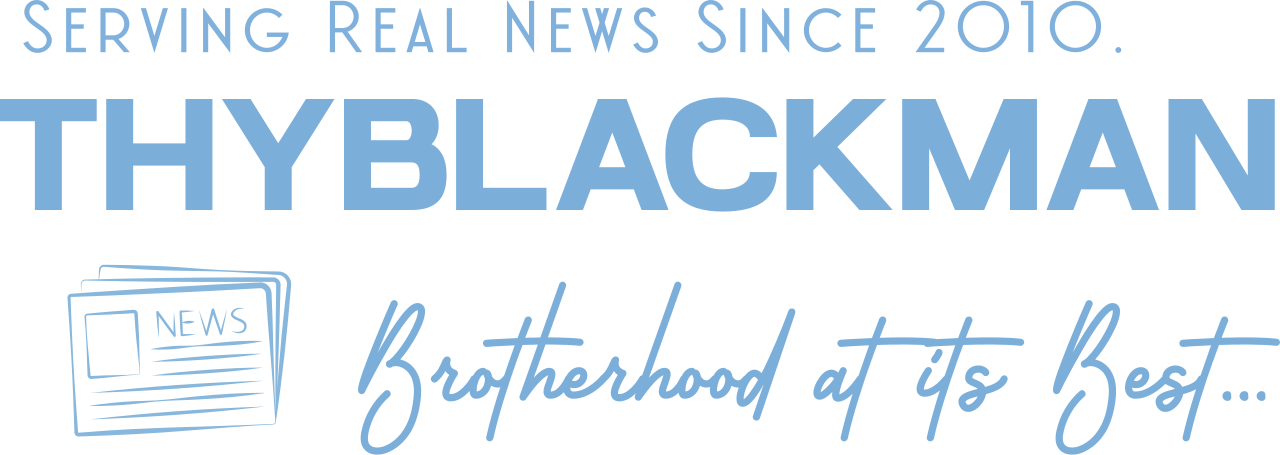(ThyBlackMan.com) When the conversation turns to the giants of the tenor saxophone, Hank Mobley’s name doesn’t always come up first — but it should. Sometimes dubbed “the middleweight champion of the tenor sax,” Mobley carved out his place not with the explosive power of Coltrane or the breathy romanticism of Getz, but with a style built on warmth, swing, and a lyrical sense of melody that remains uniquely his own. A cornerstone of the Blue Note sound throughout the late ‘50s and ‘60s, Mobley’s work epitomizes the soulful sophistication of the hard bop era.
His compositions are accessible yet harmonically rich, his improvisations conversational yet profound. To listen to Hank Mobley is to experience jazz that doesn’t shout but speaks — music that invites you in rather than demands your attention. For new listeners or lifelong jazz aficionados alike, revisiting his catalog is a reminder that sometimes subtlety leaves the deepest impression.
This curated list of eight standout Mobley tracks showcases the breadth of his artistry — from the instantly catchy hooks of Soul Station to the blues-drenched swing of his underrated gems. Each tune reveals another facet of a player whose music remains as vital and rewarding today as when it was first recorded. Whether you’re discovering Hank Mobley for the first time or simply reconnecting with his timeless vibe, these songs are an invitation to dig deeper into one of jazz’s most quietly influential voices.

1) “This I Dig of You”
“This I Dig of You” is arguably Hank Mobley’s most widely beloved track and a perfect starting point for anyone exploring his work. The tune opens with an instantly catchy riff that embodies the swinging, blues-infused vibe of the hard bop era. Backed by a stellar rhythm section — Wynton Kelly on piano, Paul Chambers on bass, and Art Blakey on drums — Mobley delivers a solo that’s so effortlessly melodic it feels like he’s telling you a story line by line.
Listening to “This I Dig of You” today feels like slipping into a timeless pocket of cool. The recording has that Blue Note warmth that brings out every subtle nuance in Mobley’s phrasing. His tone is round and inviting, never overblown. There’s a sense of laid-back confidence here that sets Mobley apart from his more aggressive contemporaries. He doesn’t rush; instead, he lets each note breathe.
Part of the tune’s magic lies in how the band moves as one. Listen closely to Wynton Kelly’s comping behind Mobley — it’s playful yet supportive, responding to every twist in the saxophone line. Paul Chambers’ walking bass has a buoyancy that keeps the groove alive without ever being pushy, and Art Blakey’s ride cymbal work sparkles like sunlight dancing on water. Together, they build a pocket so deep that Mobley’s lines feel like they’re gliding across velvet.
What makes this track endure is its sense of balance. It’s technical enough to thrill jazz aficionados yet accessible enough for casual listeners to tap their feet and hum along. There’s a bounce to it that feels perpetually fresh — you can put it on during a Sunday afternoon, a road trip, or a late-night wind-down session and it always fits. That’s the magic of Mobley: he’s a master of mood. This tune is like a musical smile, proof that sometimes jazz’s greatest gift is simply its ability to swing you into a better state of mind.
If you’re looking for a tune that sums up the best of the hard bop era, “This I Dig of You” is a must. It’s Mobley in his prime, surrounded by some of the greatest sidemen in jazz history, all locked into a groove that still swings more than six decades later. You hear it once and you’ll understand why so many players today still chase that perfect blend of sophistication and soul.
2) “No Room for Squares”
The title track from No Room for Squares finds Mobley stepping a bit outside his usual lyrical comfort zone into funkier, more angular territory. From the first bars, you can hear a slightly edgier Mobley, one who’s absorbing the influence of the shifting jazz landscape of the early ’60s. The tune’s off-kilter syncopation and punchy horn lines keep you on your toes, setting the tone for an album that pushes the edges of hard bop without losing its groove.
What’s especially compelling about “No Room for Squares” is the lineup — Lee Morgan on trumpet, Andrew Hill on piano, John Ore on bass, and Philly Joe Jones on drums. The interplay between Mobley and Morgan is electric. They toss phrases back and forth like a conversation that’s equal parts playful and serious. Morgan’s sharp, biting tone slices through the arrangement, while Mobley’s rounder phrases act as a foil, adding warmth and depth.
Dig deeper into the drumming here, and you’ll hear why Philly Joe Jones was one of the era’s most in-demand drummers. He doesn’t just keep time; he sparks ideas. Listen for those unexpected snare hits and cymbal accents that nudge Mobley to explore more daring phrases. It’s jazz as a living conversation — sometimes polite, sometimes prickly, always in motion.
Listening to this track today feels like catching a transitional moment in jazz — the classic hard bop sound evolving into something looser and more exploratory. It’s a track that rewards repeated listens. Each time, you catch a new twist in Mobley’s lines or a sly rhythmic accent that flew by the first time. It’s proof that Mobley was never static; he was always open to what the next wave of jazz might sound like.
This song is perfect for modern listeners who appreciate when jazz stretches its legs a bit. Play it when you want to feel that push-and-pull between structure and freedom. It’s Mobley at his most forward-looking, and it still sounds thrillingly alive. “No Room for Squares” reminds us that innovation doesn’t always come with fireworks — sometimes it shows up as a sly grin and a groove that won’t quit.
3) “Remember”
Hank Mobley’s version of “Remember,” a Jimmy Van Heusen standard, is a masterclass in how to take a familiar tune and make it your own. On Dippin’, Mobley is joined by Lee Morgan again, this time with Harold Mabern on piano, Larry Ridley on bass, and Billy Higgins on drums — a lineup that practically guarantees good things will happen. It’s a setting that lets Mobley show off his ballad chops without losing the swing that keeps things grounded.
What makes this version so beautiful is Mobley’s phrasing. He doesn’t just play the melody; he caresses it, elongates it, and slides into notes in a way that’s deeply human. His tone on this track is almost conversational — warm, slightly breathy, but never sloppy. There’s a touch of melancholy here, balanced by an underlying swing that keeps it from drifting into sentimentality. Mobley’s solo unfolds patiently, full of subtle twists and turns that reward close listening.
Harold Mabern’s piano is a secret hero here. His delicate chords and elegant runs create a cushion for Mobley’s lines to rest on. Listen for the moments when Mabern answers Mobley’s phrases with a flourish of his own — it’s like they’re speaking the same gentle language. Billy Higgins’ drumming is equally tasteful, brushing lightly, guiding the tune with an easy touch that feels almost like a heartbeat.
Today, “Remember” feels like an invitation to slow down and appreciate the craft of improvisation. In a world of instant gratification, Mobley reminds us that great music takes its time. There’s an elegance to this track that feels timeless — the kind of tune you can put on during a quiet evening and find yourself completely immersed in. It’s the perfect antidote to the noise of modern life.
The interplay with Lee Morgan is also worth highlighting. Morgan’s trumpet brings a brightness that contrasts beautifully with Mobley’s warmer tone. Their back-and-forth is conversational yet respectful, each giving the other space to shine. If you want to understand why Mobley is beloved by musicians, “Remember” is the track to study. It’s jazz storytelling at its finest — no gimmicks, no tricks, just soul and sincerity from start to finish.
4) “Funk in Deep Freeze”
One of Mobley’s earlier gems, “Funk in Deep Freeze” shows how he could make a tune swing and groove without sacrificing his signature subtlety. Recorded with a young Donald Byrd on trumpet and Horace Silver on piano, this track has all the hallmarks of late-’50s Blue Note magic — tight arrangements, soulful solos, and that indefinable cool that feels like a late-night jam session captured on tape.
The title is apt: there’s a laid-back funkiness to the tune, but it’s cool as ice. Mobley’s solo is a masterclass in economy and grace. He doesn’t waste a note. Instead, he crafts lines that feel natural yet sophisticated, weaving bluesy phrases into bop harmonies with ease. His tone here is direct yet relaxed, like a friend telling you something worth hearing but never shouting to make the point.
What’s remarkable about “Funk in Deep Freeze” today is how fresh it still sounds. Plenty of players can dazzle with speed and pyrotechnics, but Mobley shows that restraint can be just as powerful. The groove, propelled by Silver’s piano and Art Taylor’s drumming, feels timeless — a beat you could easily loop into a modern hip-hop track without missing a step. The bridge between hard bop and modern beats is right there, waiting to be rediscovered by new ears.
Donald Byrd’s trumpet solo deserves special mention, too. He matches Mobley’s subtlety with a bright, clear tone that lifts the tune up a notch. Their partnership is one of equals — no one is trying to outshine the other. It’s a snapshot of a young generation of jazz musicians finding their voices together, each pushing the other toward a new level of swing and sophistication.
Put this one on when you want to feel that intersection of swing, soul, and smarts. It’s an underrated classic that showcases why Mobley was so respected by his peers, even if he never courted the limelight as much as some of his contemporaries did. “Funk in Deep Freeze” is more than just a tune; it’s proof that sometimes cool is the most radical thing you can be.
5) “A Caddy for Daddy”
If there’s one Mobley tune that perfectly captures his soulful side, it’s “A Caddy for Daddy.” With an all-star lineup — Lee Morgan on trumpet, Curtis Fuller on trombone, McCoy Tyner on piano, Bob Cranshaw on bass, and Billy Higgins on drums — the track practically drips with the kind of groove that defined mid-60s Blue Note releases. You can practically see the deep leather seats and chrome trim just from the way the melody struts in.
From the moment the bassline kicks in, you know you’re in for something special. Mobley’s opening melody is catchy without being cloying, and the arrangement gives each player room to stretch. The tune has an irresistible swagger — a perfect reflection of its title. There’s a bluesy undercurrent that keeps it rooted, but it never drags. Mobley’s solo, in particular, is like a lesson in how to make the tenor sax sing. There’s a conversational flow to his lines that feels spontaneous yet perfectly structured.
Listen for McCoy Tyner’s piano here — he injects gospel-tinged chords and sparkling runs that push the groove forward while adding harmonic depth. Lee Morgan and Curtis Fuller round out the front line with just the right amount of punch and polish. It’s the musical equivalent of a Sunday drive through the city: smooth, confident, and just flashy enough to make you smile.
Listening to “A Caddy for Daddy” today is like stepping into a smoky jazz club, drink in hand, while the band locks into a groove that refuses to quit. It’s a tune that makes you want to move — not in a wild way, but with a slow, confident sway. The track bridges the gap between straight-ahead jazz and the funkier, soul-jazz vibe that was bubbling up at the time. It feels at once sophisticated and down-home, a balance few could strike so naturally.
This song’s enduring appeal lies in its warmth and accessibility. Even if you’re not a hardcore jazz head, “A Caddy for Daddy” draws you in. It’s Mobley showing that jazz can be fun, relaxed, and deeply human — a reminder that great music doesn’t have to shout to make you feel something profound. Next time you want your living room to feel like a Blue Note session, drop the needle on this one and let it roll.
6) “The Dip”
Returning to Dippin’, “The Dip” is another standout that shows Mobley’s gift for writing memorable tunes. The melody hooks you right away — it’s simple, bluesy, and endlessly hummable. Mobley’s solo here is a study in how to say more with less, using space and dynamics to draw the listener in. It’s the sound of an artist who knows exactly what not to play.
What’s fascinating about “The Dip” is how it straddles the line between blues and bop. You can hear Mobley’s gospel roots in the phrasing, but there’s also that crisp, intricate bop vocabulary woven throughout. The tune has a loping, almost playful rhythm that sets it apart from more straight-laced hard bop tracks. Harold Mabern’s piano comping provides the perfect backdrop, adding just enough sparkle without overwhelming Mobley’s warm tone.
Billy Higgins on drums is a revelation here — his brushwork keeps the groove steady while adding subtle accents that make the whole thing breathe. Larry Ridley’s bass anchors everything, grounding the piece in a soulful pocket that gives Mobley’s lines extra lift. Every player on this session knows when to lean in and when to lay back, and that push-and-pull is what makes “The Dip” so satisfying.
Play “The Dip” today, and you’ll find it slots perfectly into any chill jazz playlist. It’s the kind of track you can put on repeat without getting bored. Each listen reveals new details — a sly lick here, a rhythmic twist there. Mobley’s playing is conversational, almost as if he’s improvising just for you. It’s the kind of tune that makes you lean in closer each time you hear it.
This track is a great example of why Mobley’s writing deserves more praise. He had a knack for crafting tunes that felt familiar yet fresh, songs that could stand on their own even before the solos began. “The Dip” is proof that sometimes the simplest ideas are the ones that stick with you longest. It’s Mobley’s easy charm, bottled in four swinging minutes.
7) “Up a Step”
“Up a Step” is a buoyant, upbeat tune that showcases Mobley’s optimistic side. It’s built around a catchy head that practically bounces out of the speakers, with a propulsive rhythm that makes you want to tap your foot. Once again, Mobley is joined by Lee Morgan, whose trumpet adds an extra layer of sparkle and attitude. This is a session where everyone sounds like they’re genuinely having fun.
What’s remarkable about “Up a Step” is how Mobley manages to keep things light and swinging while delivering a solo that’s full of subtle complexity. He takes the listener on a journey, using repetition and variation in ways that feel both natural and clever. The way he develops ideas over the course of his solo is a testament to his compositional mind — every phrase builds on the last like pages in a well-crafted story.
Andrew Hill’s piano adds just the right amount of unexpected harmony — listen for those sly chord substitutions that make your ear perk up. Philly Joe Jones is on drums again, and his crisp, syncopated accents give the tune a sense of lift that makes the whole band sound airborne. It’s bop, but it’s got a grin on its face.
Today, “Up a Step” still feels like the perfect pick-me-up. It’s hard to listen to this track and not feel a little brighter afterward. In a sense, it embodies the spirit of hard bop at its best — rooted in the blues but always pushing forward with a sense of joy and possibility. This is the sound of Mobley at his most effervescent, a reminder that swing doesn’t always have to be heavy.
If you’re introducing someone to Hank Mobley for the first time, this is a great track to play. It’s approachable, melodic, and full of that swing that made Mobley one of the genre’s most respected — if sometimes underappreciated — players. “Up a Step” shows that Mobley didn’t need big gestures to make an impact. Sometimes, a simple phrase played just right is all you need to lift the whole band — and the listener — up a step.
8) “Soul Station”
Closing this list with “Soul Station” feels right — it’s Mobley’s definitive statement and a reminder of just how perfectly he could craft a vibe. The title track from his best-known album, “Soul Station” is an extended piece that allows Mobley to stretch out and show every facet of his artistry. This isn’t just a tune; it’s an atmosphere you step into and live inside for nearly ten blissful minutes.
The tune opens with a simple, almost hymn-like melody that immediately sets a reflective mood. There’s a spiritual calmness to the opening head that feels like Mobley tipping his hat to his gospel roots. He then begins to spin his solo, starting with short, lyrical phrases and gradually expanding into longer, more intricate lines. There’s a sense of narrative here, as if he’s telling you a story with each chorus — a story about joy, loss, and quiet resilience.
Wynton Kelly’s piano on this session is indispensable. His comping is warm and patient, and when he takes his own solo, it feels like the sun breaking through a cloudy day. Paul Chambers and Art Blakey round out the rhythm section with an elegance that only the greatest can achieve — every note serves the song, every beat deepens the groove.
Listening to “Soul Station” today is like entering a sanctuary of sound. It’s calming but never boring; it’s soulful but never saccharine. Mobley’s tone is at its warmest and most inviting, drawing you in and holding you there for every note. It’s the kind of track that reveals more with each listen. You hear new inflections, little breaths between phrases, subtle harmonic shifts that remind you how much beauty lives in restraint.
If you only check out one Hank Mobley recording, make it “Soul Station.” It’s an album and a song that show why Mobley’s subtlety, lyricism, and swing continue to inspire musicians and listeners alike. It’s timeless jazz — pure and simple — and a reminder that sometimes the softest voice in the room is the one you remember most.
In an era when many jazz musicians found fame through flamboyant showmanship or boundary-shattering experimentation, Hank Mobley’s brilliance shone in the details — a perfectly turned phrase, a melody you can hum, a solo that unfolds like a story whispered just for you. These eight tracks are a testament to his remarkable ability to blend sophistication with soul, creating music that swings with ease and speaks with honesty.
Mobley’s legacy is the sound of hard bop at its most welcoming: bluesy, lyrical, and deeply human. More than sixty years later, his recordings still resonate because they capture a mood we continue to crave — a space where great musicians converse with warmth and wit, where the groove feels effortless, and where each note is a reminder of how timeless this music truly is.
So pour yourself a drink, drop the needle on Soul Station or A Caddy for Daddy, and let Hank Mobley’s tenor sax remind you that sometimes the most understated voices leave the strongest mark. In Mobley’s world, jazz isn’t just music — it’s a conversation worth revisiting again and again.
Staff Writer; Jamar Jackson
















Leave a Reply